At MACS Clinic, we understand that deciding to undergo gynecomastia surgery (male chest reduction) need a detailed insight into care required following the procedure . But surgery is only one part of the journey — the recovery and aftercare are equally important in ensuring you get the best possible results.
Here, we provide a comprehensive guide on post-operative care, what to expect in each stage of recovery, and how to look after yourself to ensure a smooth healing process.
- What is Gynecomastia Surgery?
Gynecomastia is the enlargement of male breast tissue caused by hormonal imbalance, genetics, weight gain, or certain medications. It can affect one or both sides of the chest and may include excess glandular tissue, fatty deposits, skin laxity or combinations.
At MACS Clinic, gynecomastia correction surgery is tailored to each patient’s needs and may involve:
- Liposuction to remove excess fat
- Direct excision to remove glandular tissue
- Combination techniques for severe or complex cases
The outcome of the procedure depends on how well you follow post-op care instructions.




- Immediate Recovery (First 24–48 Hours)
- Hospital stay: Most patients can return home on the same day or the following morning.
- Compression garment: A snug vest is applied immediately after surgery to reduce swelling, support healing tissues, and help skin contract smoothly over the new chest contour.

- Pain & discomfort: Some tightness, soreness, or burning sensations are normal. Painkillers will be prescribed to keep you comfortable.
- Antibiotics will be prescribed for a period of 5 to 7 days
- Rest: Limit arm movements (especially overhead) and avoid chest strain. Sleep on your back with your head elevated to reduce swelling.
- The First Week After Surgery
Pain & Swelling
- Bruising and swelling around the chest are expected. These peak at around day 2–3 and gradually improve.
- Pain usually decreases significantly within a few days.
Compression Garment for 4 weeks
- Must be worn 24/7, only removed for showers.
- This is one of the most important parts of recovery — it prevents fluid accumulation, reduces bruising, and ensures even chest contour.
Wound Care
- Dressings should remain clean and dry.
- Stitches are usually dissolvable. MACS clinic will organise your change of dressing within 7 days after your procedure
Activity
- Resume your desk work
- Short walks are encouraged to promote circulation and prevent clots.
- Avoid lifting anything heavier than 2–3 kg.
- You will be advised about your driving by the surgeon after your follow up visit , provided you are no longer on strong painkillers and can perform an emergency stop comfortably.
- Weeks 2–4: Settling Into Recovery
- Swelling decreases but the chest may feel firm or lumpy — this is due to internal healing and scar tissue formation. It usually softens over time.
- Bruising fades. Skin over the chest may feel tight as it adapts to the new shape.
- Continue wearing the compression vest (day and night) as instructed (typically 4–6 weeks).
- Avoid strenuous exercise or heavy lifting.
- Some patients experience temporary numbness or tingling, which is part of nerve healing.
- We will advise you about scar therapy which includes gentle massage, application of Silicone Gel and moisurisation once the wound has completely healed .
- Returning to Exercise & Normal Life (Weeks 4–8)
- By week 4, most swelling has subsided.
- Gentle cardio exercises (walking, stationary cycling, elliptical) are allowed.
- Avoid chest workouts (push-ups, bench press, heavy weights) until cleared by your surgeon, usually around 6 weeks.
- You can start resuming most normal daily activities, including work, social events, and light physical tasks.
- Continue to avoid direct trauma or pressure on the chest (e.g., contact sports) until at least 8 weeks.
- Long-Term Results & Expectations
- 3 months onwards: Most swelling has settled, and the chest looks flatter and firmer.
- 6 months: Final results become visible. Skin and underlying tissues are fully healed, and the chest contour stabilises.
- Scarring: Small scars (hidden near the armpit or around the areola) will gradually fade and become barely noticeable within 6–12 months.
- Long term results: As long as you maintain a stable weight and avoid factors like steroid abuse, recurrence is rare. Mr Vadodaria came across a rare recurrence in his own practice in a patient who developing recurrence after 7 years following correction of steroid induced Gyanacomastia . (When Gynecomastia Comes Back after 7 years!! – A Rare Recurrence of Steroid induced Gynecomastia – MACS Clinic London)
- Possible Side Effects & When to Call Your Surgeon
While gynecomastia surgery at MACS Clinic is safe, it’s important to know when to seek help:
- Normal side effects: swelling, bruising, mild pain, firmness, numbness.
- Call Mr. Vadodaria if you notice:
- Excessive swelling on one side
- Worsening pain not relieved by medication
- Bleeding, pus, or foul-smelling discharge
- Redness, fever, or chills (signs of infection)
- Chest asymmetry or sudden fluid build-up
Early intervention helps prevent complications and ensures smooth healing.
- Key Do’s and Don’ts After Gynecomastia Surgery
✅ Do:
- Wear your compression garment exactly as instructed
- Sleep on your back with chest elevated
- Eat a balanced, protein-rich diet to support healing
- Stay hydrated
- Take gentle daily walks to aid circulation
- Attend all scheduled follow-up appointments
- Use your prescribed medications
❌ Don’t:
- Smoke or drink alcohol (slows healing and increases infection risk)
- Skip wearing your compression vest
- Lift heavy weights or resume gym too early
- Apply creams, oils, or massage unless advised
- Expose scars to direct sunlight without SPF
- Emotional & Lifestyle Impact
For many men, gynecomastia is not just a physical issue but also an emotional one. After surgery, patients often report:
- Improved confidence in wearing fitted shirts or going shirtless
- Increased motivation for fitness
- Better posture and self-esteem
- Enhanced comfort in social and intimate settings
At MACS Clinic, we support you through both physical recovery and emotional well-being.
10. Summary for Patients
Post-operative care following gynecomastia surgery is straightforward but critical.
By carefully following your surgeon’s instructions:
- Wearing your compression garment
- Avoiding heavy exercise too soon
- Keeping wounds clean
- Attending follow-ups
- Taking your prescribed medications
Photos/Videos of gynecomastia correction
Patient 1: Steroid induced bilateral gynecomastia correction at MACS Clinic under local anaesthetics




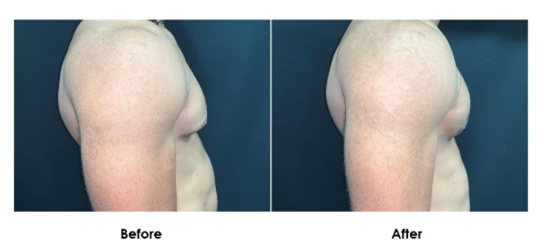
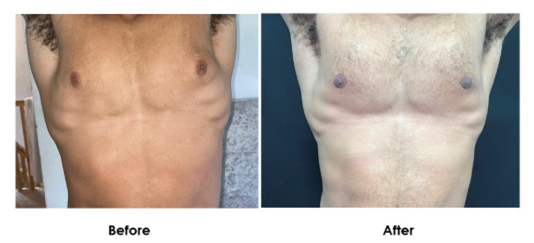
Patient 2: Liposuction assisted open excision bilateral gynecomastia under general anaesthetics as a day case procedure
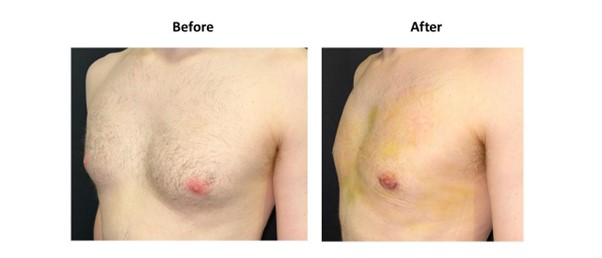
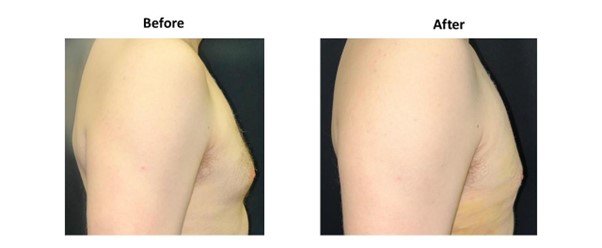
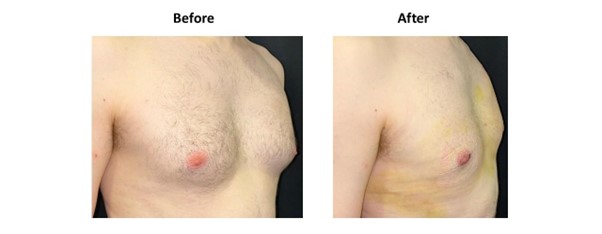
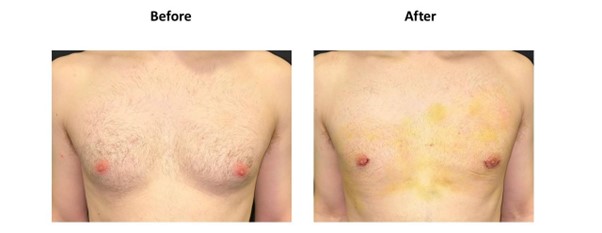
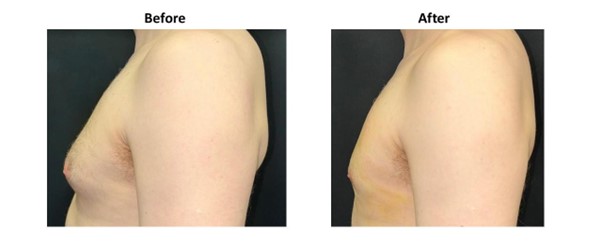
Videos:
Contact MACS Clinic
📞 Phone: 020 7078 4378
💬 WhatsApp: 07792 648 726
📧 Email: enquiries@macsclinic.co.uk
🌐 Website: macsclinic.co.uk







